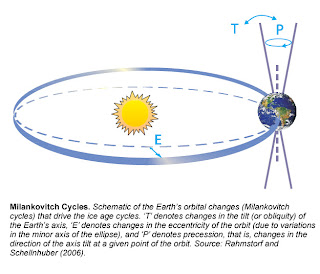Along with the Milankovitch cycles, vegetation and bodies of water will emit/absorb high levels of greenhouse gases over time. The reason that substantial warming does not occur with natural processes, is due to the ability to absorb (take out of the atmosphere) greenhouse gases. This is not to say that natural processes do not cause warming at all!
To understand anthropogenic warming, analysis of the word itself can be used to simplify meaning. Break the word down into anthropo- (meaning men) and -genic (meaning cause). Now put together it is easier to see that anthropogenic warming is that which is caused by humans. The scientists that study anthropogenic warming say that humans have increased the global temperature 1.5* F since 1850 and this is how they are proving it. Greenhouse gases such as methane, carbon dioxide, and nitrous oxide have significantly increased since this time (Industrial revolution and so on). As more and more gas is present in the atmosphere, its ability to "trap" radiation from earth is increased and effectively heats the earth.
 |
| Figure 7: Temperature and Carbon Dioxide Data |
Though the analysis seems simple, Figure 7 shows how correlated the data is (shown for carbon dioxide). Burning of fossil fuels accounts for 60% of greenhouse gas emissions which is causing a sense of urgency for the use of alternative energy sources. Even with decreases in these greenhouse gas emissions, will the global temperature ever be restored?
Understanding the potential damage of greenhouse gases will more than likely lead to the beginning of an era to restore (or at least reduce) levels of such gases. So pretend that all greenhouse gases were "shut off" or no longer allowed to be released into the atmosphere. The global temperature would slowly decrease right? According to the NOAA, no it would not! Currently, the oceans are soaking up a lot of the planet's heat (as well as the carbon dioxide) and will eventually start being released back into the atmosphere. This process may take hundreds (maybe thousands) of years and in the eyes of scientists, is considered irreversible. Figure 8 shows how gas levels (carbon dioxide) may decrease if emissions completely stopped.
 |
| Figure 8: Results of stopped carbon dioxide emissions |
References:
http://ossfoundation.us/projects/environment/global-warming
http://www.pewclimate.org/global-warming-basics
http://monthlyreview.org
http://www.greenmontclair.org/greenmontclair/The_Science/Entries
http://www.npr.org/templates/story/story.php?storyId=99888903



No comments:
Post a Comment